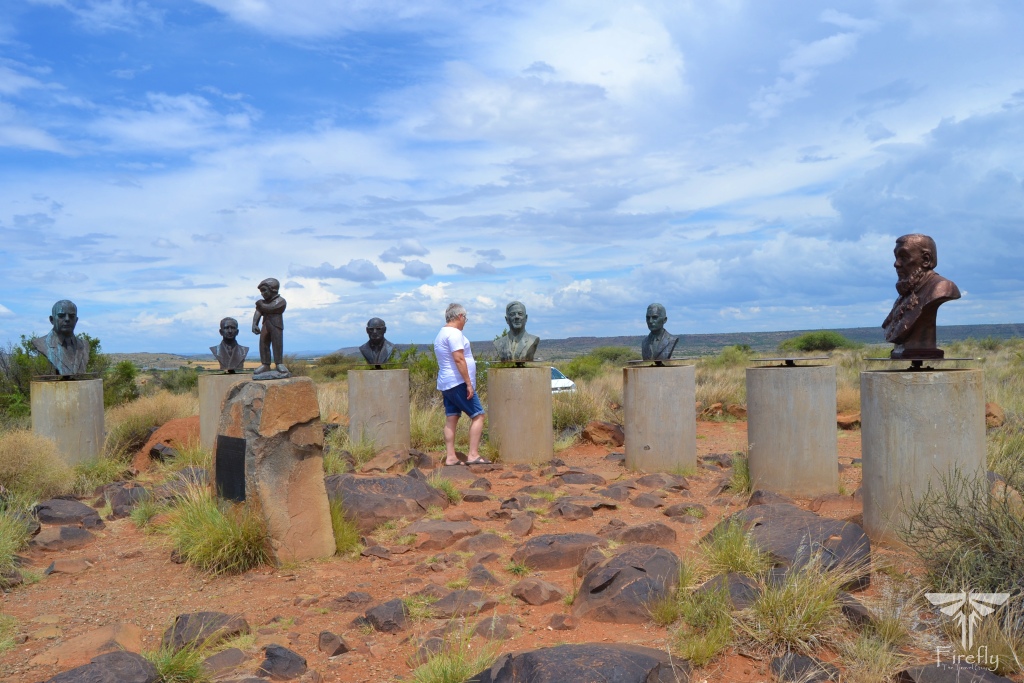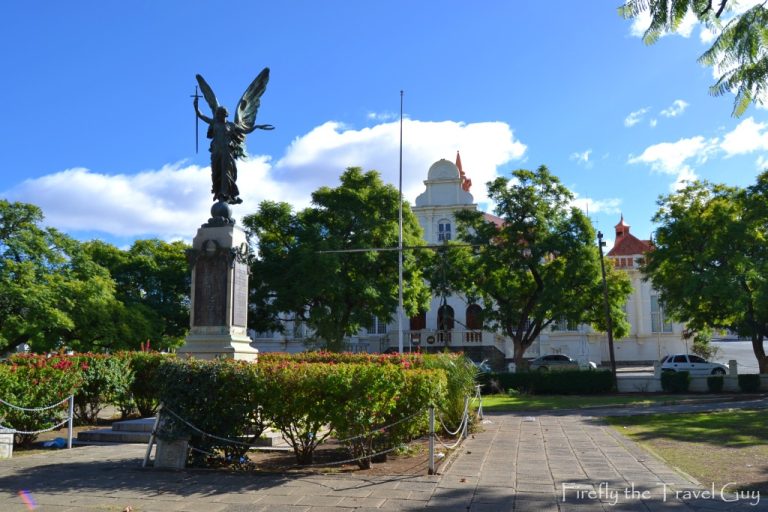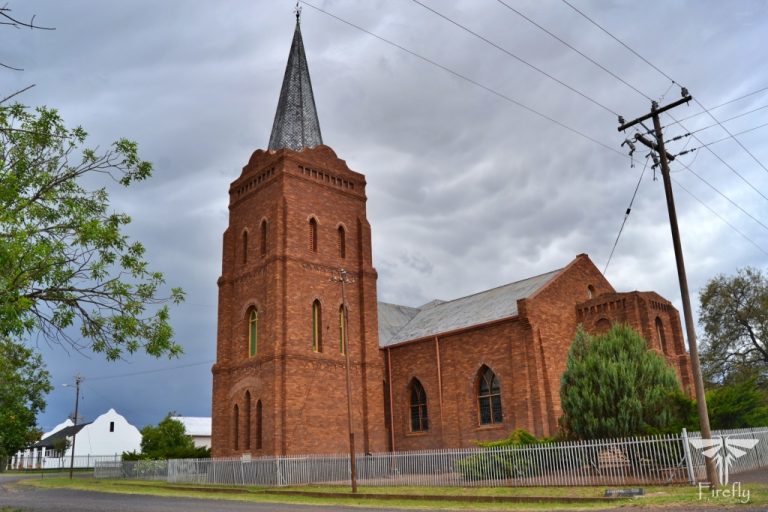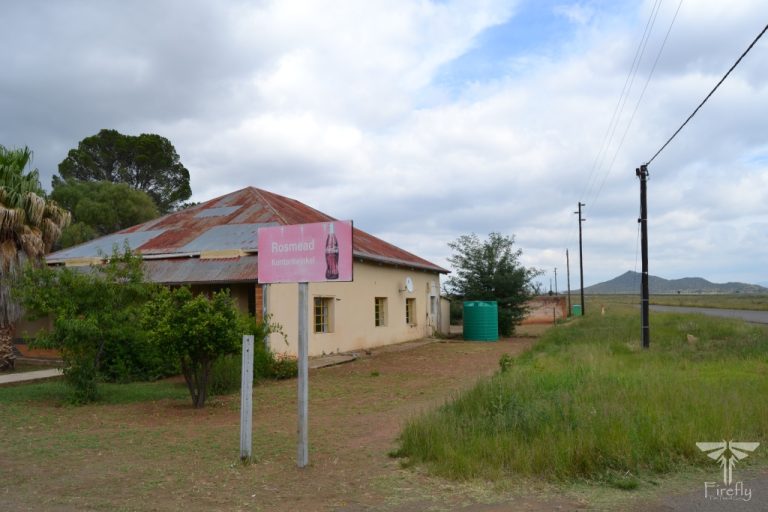
I love exploring small towns. There’s just something about them and the history you find there. But what if it’s a small town that technically is new and without its own history yet still has a lot of history in it? Sounds confusing, doesn’t it? There is one such place that has been on my bucket list radar for quite some time. The Afrikaner enclave of Orania. Partly to see what the town looks like for myself, partly to visit the attractions in the town and partly just to be able to say I’ve been there. A little while ago en route to a cricket tournament in Bloemfontein, the Damselfly and I decided to spend a few days in the Karoo and then an extra day on the road to visit the Vanderkloof Dam and Orania. If I thought, and I kinda did, that I could just take a drive through town and see it all in an hour or two, I was definitely so wrong. But that was what I had and we didn’t nearly get to all the attractions there are in town. So this post isn’t about the town in general nor is it about how it was founded and what it stands for, but more about a traveler’s perspective showing a couple of the attractions you can see when visiting Orania.

Our first stop was at the Orania Monumentekoppie on the hill overlooking the town. The Heroes’ Garden celebrates the statesmen from Afrikaner history. The view from the hill is stunning and it’s the best spot in town to enjoy the sunset from. Monumentkoppie is made up of a half circle of plinths with busts of past Afrikaner leaders, including apartheid leaders. Placed from right to left (left to right in the picture) are Paul Kruger, JBM Hertzog, Hendrik Verwoerd, DF Malan, JG Strijdom, BJ Vorster. Standing in front of them is a small statue (about 400 mm high) of the small boy rolling up his sleeve. He is called the Kleinreus “Little Giant” and is the symbol of Orania.

Not far from Monumentkoppie is a monument that looks similar to the Afrikaans Taal (Language) Monument in Paarl. It’s the Irish Monument originally erected in Brixton, Johannesburg in 1976 and it was designed by Jan van Wyk who was the architect of the Taal Monument. The monument was erected by the Irish Brigade Memorial Fund “in remembrance of the 300 Irish who fought for the Boer nation in its hour of need between 1899-1902”, as the inscriptions in English and Afrikaans read. The monument was dismantled in 2002 and driven to Orania by a group of Afrikaners concerned by its imminent demolition. Three of the cylinders represent the Irish battalions that fought in the South African War (Anglo Boer War), and the fourth – and tallest one, at 3.5m – represents the rising of the Afrikaner nation.

The one monument that was top of my list to see while there is the Koeksister Monument. For international readers who don’t know what a koeksister is, a koeksister is a traditional Afrikaner confectionery made of fried dough infused in syrup or honey. There is also a Cape Malay version of the dish, which is a fried ball of dough that is rolled in desiccated coconut called a koesister. The name derives from the Dutch word “koek”, which generally means a wheat flour confectionery, also the origin of the American English word “cookie”, and “sister” can refer to the oral tradition of two sisters plaiting their doughnuts and then dunking them in syrup, so creating this iconic pastry.
The Koeksister Monument may have been a tongue-in-the-cheek project, but it does have a much deeper meaning to it. It’s a humble sweet that is typical to Afrikaners and over the years it has been integral to fundraising projects for churches and schools at basaars and fetes.

A very controversial museum is the Verwoerd Museum. The Verwoerd Memorial Collection is housed in the home of the late Mrs Betsie Verwoerd, widow of former Prime Minister Hendrik Verwoerd. After her death in 2000, her house was converted into a museum containing images, possessions, gifts and even the clothes worn by Verwoerd on the day he was assassinated. We literally just had time to swing past the outside of the house.
Unfortunately, we also didn’t have time to visit the Orania Cultural-Historical Museum. It covers everything from the arrival of Jan van Riebeeck to the Great Trek, the Boer Republics, Anglo Boer War and concentration camps to the Border War, Boer rebellions and the forming of both the Union and the Republic of South Africa. It includes weapons, tools and flags from the history of Afrikaners in Africa.
Unless you just want to have a quick look around as we did, it’s probably best to stay a night or two and explore properly. Next time I’ll have a proper visit.


